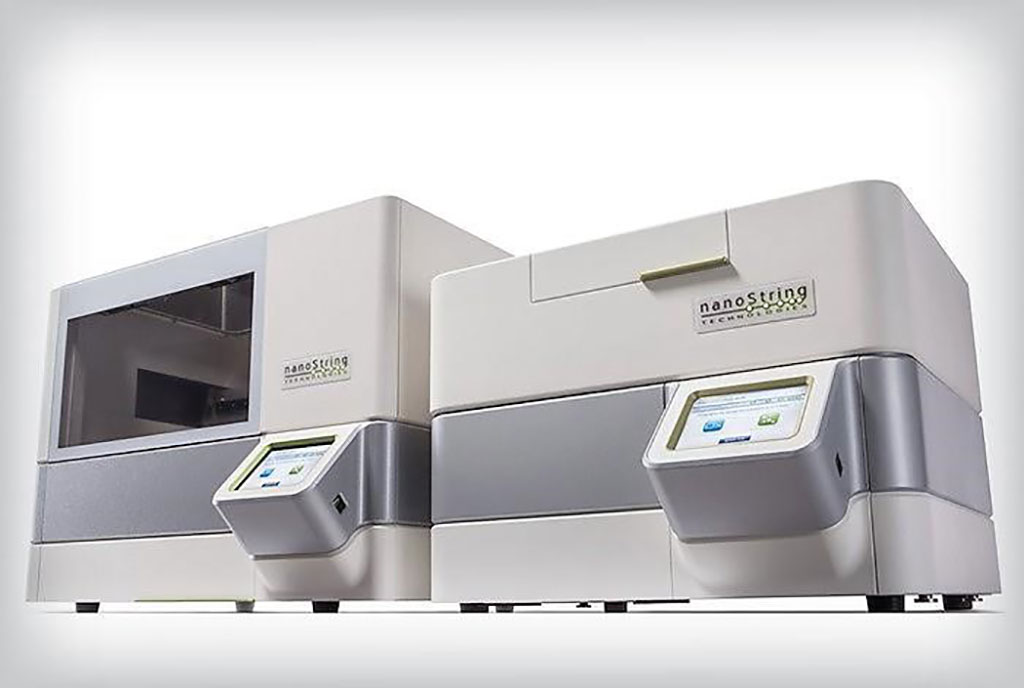Genetic Alterations Analyzed in Pediatric Low-Grade Glioma
By LabMedica International staff writers
Posted on 28 Apr 2020
Low grade gliomas are brain tumors that come from two different types of brain cells known as astrocytes and oligodendrocytes. They are classified as a grade 2 tumor making them the slowest growing type of glioma in adults.Posted on 28 Apr 2020
Pediatric low-grade gliomas (pLGG) are frequently driven by genetic alterations in the RAS-mitogen-activated protein kinase (RAS/MAPK) pathway yet show unexplained variability in their clinical outcome. Genetic alterations have been documented in this brain tumor subtype (pLGG) that correspond with better or worse patient outcomes.

Image: The nanoString nCounter: This instrument provides a simple and cost-effective solution of direct digital quantification for multiplex analysis of up to 800 known RNA, DNA, or protein targets in one tube (Photo courtesy of the Crown Institute of Genomics).
A large team of scientists led by those at the Hospital for Sick Children (Toronto, ON, Canada) used imaging, histology, targeted DNA sequencing, RNA sequencing, clinical, and other data for more than 1,000 children with pLGG, they narrowed in on two broad groups of tumors marked either by recurrent rearrangements or by single-nucleotide variants. Broadly speaking, they noted, rearrangement-rich tumors tended to turn up in relatively low-risk pLGG cases, while certain sets of single-nucleotide changes coincided with intermediate- or high-risk pLGG cases.
Starting with data for 976 pLGG patients treated at the hospital between the mid-1980s and 2017, the investigators focused in on 477 cases that could be successfully profiled using methods such as RNA-seq, NanoString nCounter analyses (nanoString Technologies, Seattle, WA,USA), array-based single nucleotide polymorphism (SNP) profiling, targeted DNA sequencing, droplet digital polymerase chain reaction (ddPCR), and immunohistochemistry.
The scientists reported that 84% of cases harbored a driver alteration, while those without an identified alteration also often exhibited upregulation of the RAS/MAPK pathway and roughly two-thirds of the cases contained BRAF or NF1 mutations, or KIAA1549-BRAF fusions. The team also drew prognostic insights from the kinds of mutations that occurred often in the pLGGs. For example, a cluster of 265 tumors appeared to have rearrangement-related drivers. Those tumors were overrepresented in children diagnosed with pLGG before the age of 10, the investigators noted, and some 88% were classified as having grade I histology. In those rearrangement-related cases, the 10-year overall survival rate reached nearly 98%.
Cynthia Hawkins, MD, PhD, a neuropathologist and corresponding author of the study, said, “The pLGG morphological, imaging, clinical, and molecular profiling allowed us to comprehensively investigate the molecular underpinnings and provide comprehensive clinical insights for some of the rarest of pLGG molecular subtypes. These data can guide diagnostic protocols and treatment approaches, while aiding in expediting clinical trials for new, better-targeted therapies for these children in the near future.” The study was published on April 13, 2020 in the journal Cancer Cell.













